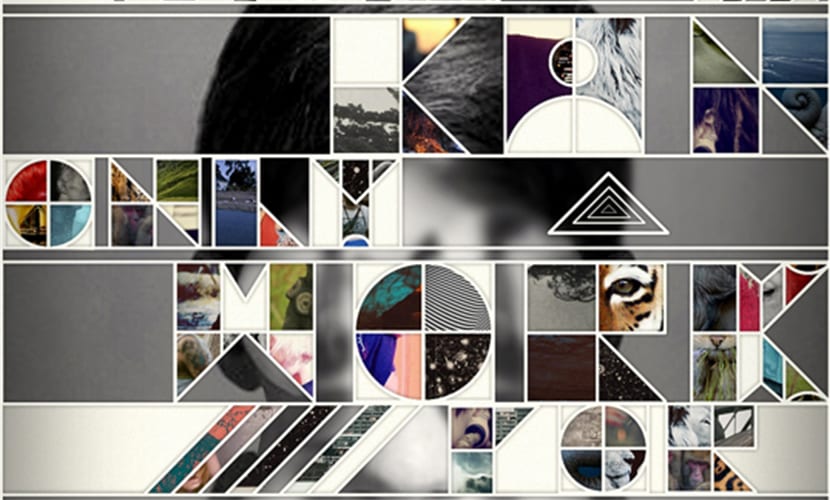
Milton Glaser is an icon in the world of design and a figure that all professionals in this field take as a reference. Born in 1929, he has worked on numerous projects, including the famous Bob Dylan poster that became a symbol of the sixties. Above all, he has dedicated himself to editorial design and corporate identity, although in his long career he can find all kinds of projects.
In today's article I am going to present you ten morals or lessons learned that this magnificent professional drew from the world of graphic design. The truth is that it is a privilege to receive advice from someone who has been in our field for more than fifty years. I leave you here, take note!
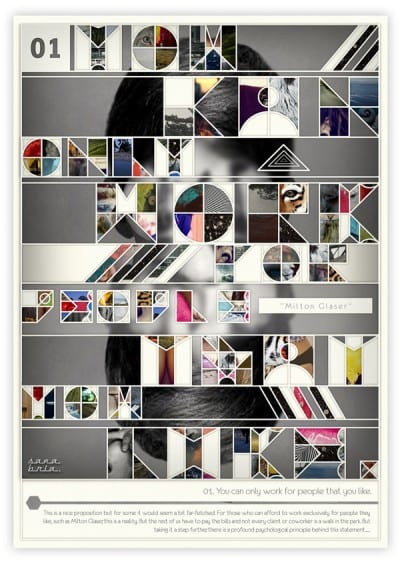
1. You can only work for people you like
Projects really turn out to be effective when there is a space for human relationships. It is a somewhat curious statement, considering that it clashes a bit with the concept that has traditionally been had of the term professionalism. We tend to think that being a professional is synonymous with a person who is capable of developing his activity in any social environment. In a way it is so, although this is a half reality. The trust component and the chemistry that may exist between us and our clients will inevitably reverse throughout the process. Feeling comfortable, having a coffee, talking and discussing certain things, is a point in our favor. In short, in this way we will be able to establish stronger links with our clients and therefore a more direct relationship with the final result. In the words of Milton Glaser himself: I discovered that all the valuable and meaningful work I had produced came from caring relationships with clients. I am not talking about professionalism; I'm talking about affection.
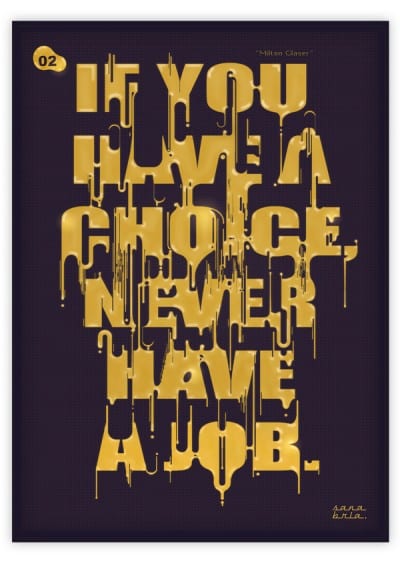
2. If you can choose, don't have a job
The purpose of our actions is of vital importance. Many times we tend to walk in a certain direction without really knowing why we are doing it or for what. Sometimes we forget where we want to go and that makes us people who are not prepared to face the future. Glaser refers to the words of the philosopher and composer, John Cage: I never had a job, because if you have a job, someday someone will take it away from you and then you will not be ready for old age. It's been the same for me every day since I was twelve. I get up in the morning and try to get an idea of how to put bread on the table today. It's the same at seventy-five: I get up every morning and think about how I'm going to put bread on the table today. I am excellently prepared for old age.

3. Some people are toxic, better avoid it
In professions and artistic branches where confidence in one's own criteria and personal vision of things is the cornerstone, the environment in which we operate can become something that strengthens us or something that breaks our conception of things. There are environments that are literally emasculating and mutilating the most creative proposals. We must learn to avoid them. We have to learn to take care of our relationships and to take care of those environments that have a bad influence on us as people. Milton offers us a trick to identify this type of environment and people that can be quite useful. Here's the test: you have to spend some time with the person, have a drink, go to dinner, etc. It doesn't matter too much, but in the end see if you feel more or less energetic, if you are tired or if you are strengthened. If you are more tired, then it has poisoned you. If you have more energy, it has enriched you. The test is almost foolproof and I suggest using it for a lifetime.
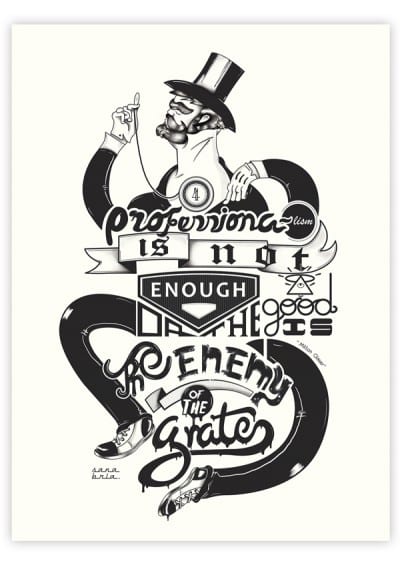
4. Professionalism is not enough
One of our greatest aspirations is to become professionals, however this concept and this way of understanding work is also subject to a series of limitations to creativity itself. Our author tells us that in his career he discovered what was behind professionalism. Actually a drag. The objective to which a professional aspires is to obtain success in economic terms, therefore if he finds a formula that brings him benefits, he will not hesitate to take it as an unquestionable principle and this will translate neither more nor less into giving up other formulas, possibilities and forms of action. In this way, professionalism becomes more of a limitation. After all, what is required in our field, more than anything else, is continual transgression. Professionalism does not lead to transgression because it includes the possibility of error and if you are a professional, your instinct dictates not to fail, but to repeat the success. So professionalism as a life aspiration is a limited goal.

5. Less is not necessarily more
On the other hand, Milton talks about the mantra less is more and replaces it with the principle of enough is more. If we stick to the visual history of the world we discover manifestations such as the art nouveau that show us less sometimes is not more. On certain occasions, baroque is necessary and synonymous with quality.
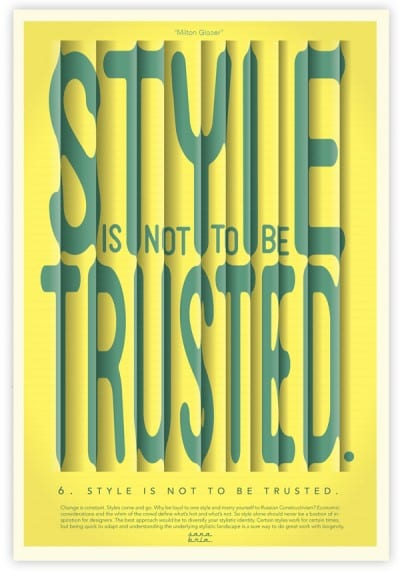
6. The style is not reliable
It is absurd to stay true to a style, it does not deserve our unconditional loyalty. The unknown masterpiece by Pablo Picasso is proof of this. We live in a dynamic, changing sphere. Marx already said that the change of a style is totally related to economic factors. A certain wear or fatigue occurs when the public is exposed in a recurring way to the same style. For this reason, every ten years or so there is a break, a change and a new rebirth. Typefaces come and go and the visual system undergoes modifications. This is a decisive factor that will mark and determine our entire trajectory. Established designers have their own vocabulary, a way of communicating and doing that is their own. This is a very useful strategy to distinguish ourselves from our competitors and establish our own solid identity. Maintaining our style or modifying it is a difficult issue to address, we do not know exactly when we should introduce a change in our line of work. We all know cases of artists who have skimmed the sky to later remain anchored in the past, extinct, outdated and out of fashion. There are sad stories like that of Cassandre, arguably the greatest graphic designer of the early XNUMXth century, who was unable to earn a living in his later years and committed suicide.
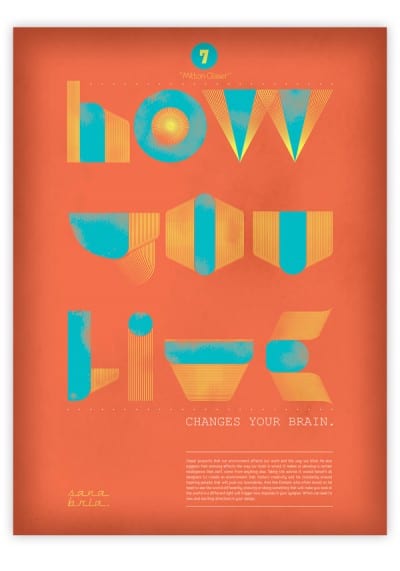
7. As you live, your brain changes
The brain is the most active organ in the body, in fact, it is the organ most susceptible to change and regeneration. I have a friend named Gerard Edelman who is a great scholar in brain studies and for whom the analogy of the brain with the computer is unfortunate. The brain is more like a wild garden that is constantly growing and spreading seeds, regenerating, etc. And he believes that the brain is malleable — in a way that we are not fully aware of — to every experience and encounter that we have in our life.
I was fascinated by a story in a newspaper a few years ago about the search for absolute pitch. A group of scientists decided that they would find out why some people have perfect pitch. They are the ones who can hear a note accurately and replicate it exactly in the correct pitch. Some people have very fine hearing, but absolute pitch is rare even among musicians. The scientists discovered — I don't know how — that in people with absolute pitch, the brain was different. Certain lobes of the brain had undergone some recurrent change or deformation among those with absolute pitch. This was interesting enough in itself, but then they discovered something even more fascinating: if you take a group of four or five year old children and teach them to play the violin, after a few years some of them will have developed absolute pitch, and in all those cases your brain structure will have changed. Well ... what could that mean for the rest of us? We tend to believe that the mind affects the body and that the body affects the mind, but we generally don't believe that everything we do affects the brain. I am convinced that if someone were to yell at me from across the street, my brain could be affected and my life could change, that is why my mother always said: "Don't hang out with those bad boys" and my mother was right , thought changes our life and our behavior.
I also think that the drawing works the same way. I am a great supporter of drawing, not because I became an illustrator, but because I believe that drawing changes the brain, in the same way that finding the right note changes the life of a violinist. Drawing makes you attentive, it makes you pay attention to what you see, which is not so easy.
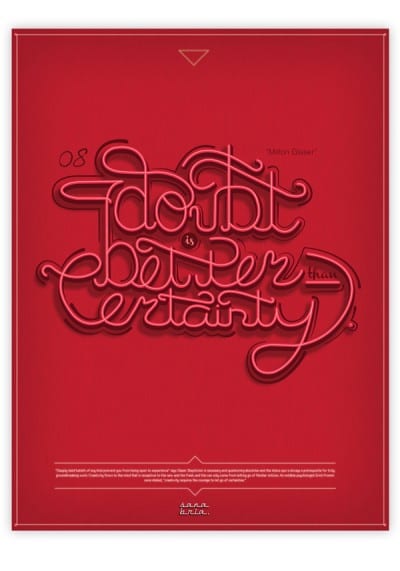
8. Doubt is better than certainty
Critical ability is paramount. Questioning all kinds of entrenched convictions offers us a much broader repertoire of opportunities. Focus lines and development methods. Skepticism gives us greater freedom, which becomes an open channel for large doses of inspiration and parallel and suggestive approaches. With a wide and clean vision, we will have the opportunity to make greater connections between concepts, go deeper on a larger scale and save great relics from the depths of our inventiveness. Schools encourage the idea of not compromising and defending your work at all costs. Well, the point is that all work has to do more than anything with the nature of the commitment. You just have to know what to commit to. The blind pursuit of your own ends at the cost of excluding the possibility that others may be right, does not take into account the fact that in design we always deal with a triad: the client, the audience and yourself. Ideally, through some kind of negotiation all parties will win, but self-reliance is often the enemy.
Some years ago I read a very remarkable thing about love, which also applies to the nature of the relationship with others, it was a quote from Iris Murdoch in her obituary and it said: “Love is the extremely difficult fact to realize. that the other, which is not one, is real ”. Isn't it fantastic? The best conclusion on the subject of love that you can imagine.
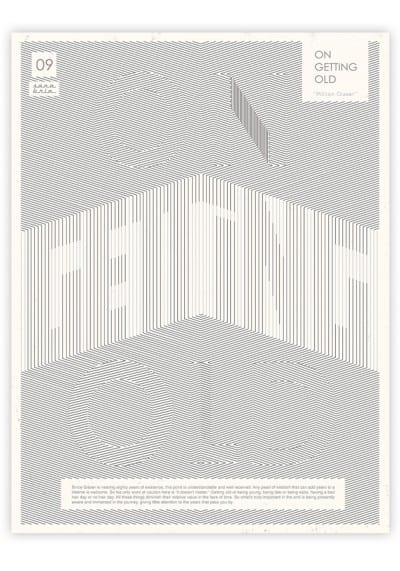
9. About age
Last year someone gave me a lovely book by Roger Rosenblatt for my birthday called Aging Gracefully. I didn't realize the title at the time, but it contains a number of rules for aging gracefully. The first rule is the best: “It doesn't matter. It doesn't matter what you think. Follow this rule and you will add decades to your life. It doesn't matter if it's sooner or later, if you're here or there, if you said it or not, if you're smart or stupid. If you came out tousled or bald or if your boss looks at you scratched or your boyfriend or girlfriend looks at you scratched, if you are scratched. Whether or not you get that promotion or award or house: it doesn't matter ”. Great wisdom. Then I heard a wonderful story that seemed related to rule number 10:
A butcher was opening his business one morning and as he was doing so, a rabbit poked its head through the door. The butcher was surprised when the rabbit asked, "Do you have cabbage?" to which the butcher replied: "This is a butcher shop, we sell meat, not vegetables." The rabbit hopped away and the next day when the butcher was opening his business, he poked his head out again and asked, "Do you have cabbage?" The butcher, already angry, replied: "Listen to me little rodent, I told you yesterday that we sell meat, not vegetables and the next time you come here I will grab you by the neck and stick those ears on the ground." The rabbit disappeared and nothing happened for a week. Then one morning the rabbit poked its head out from the corner and asked, "Do you have nails?" to which the butcher said, "No," then the rabbit said, "Do you have cabbage?"
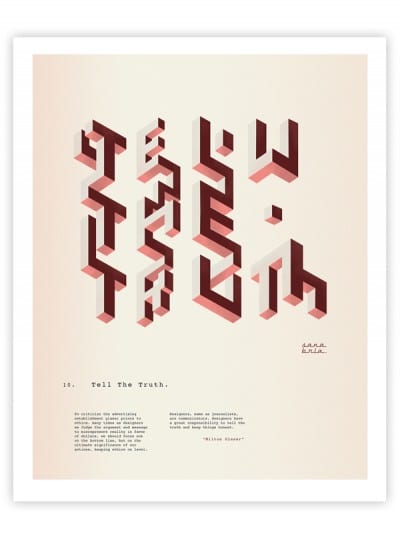
10. Tell the truth
The story of the rabbit is important because it occurred to me that looking for cabbage in a butcher shop would be like looking for ethics in the field of design. It doesn't seem like the best place to find it.
It is interesting to note that in the new code of ethics of the American Institute of Graphic Art there is a significant amount of information about behavior towards clients and towards other designers, but not a word about the designer's relationship with the public. What is expected of the butcher is that he sells edible meat and not misleading merchandise. I remember reading that, during the Stalin years in Russia, everything that was labeled "beef" was actually chicken. I don't want to imagine what would be labeled "chicken."
We can accept some minimal level of deception, like being lied to about the fat index of hamburgers, but when the butcher sells us rotten meat, we go elsewhere. As designers, do we have less responsibility to our audience than a butcher? Anyone interested in recruiting graphic designers should note that the raison d'être of an official College is to protect the public, not the designers or the clients. "Do no harm" is a warning to doctors that has to do with their relationship with their patients, not with their colleagues or with the laboratories. If we were collegiate, telling the truth would become the most important thing in our activity.
What a complete article! I subscribe to each and every one of the guidelines, now if you have to apply it ... Faithful follower of Glaser.
Thanks for stopping by Jorge! A greeting!
Great article! the ten commandments of a great ... now we only need to apply it to work, which is the difficult thing.
Applying it always costs a little more, but it is important that we have good references like Glaser! Greetings and thanks for stopping by!